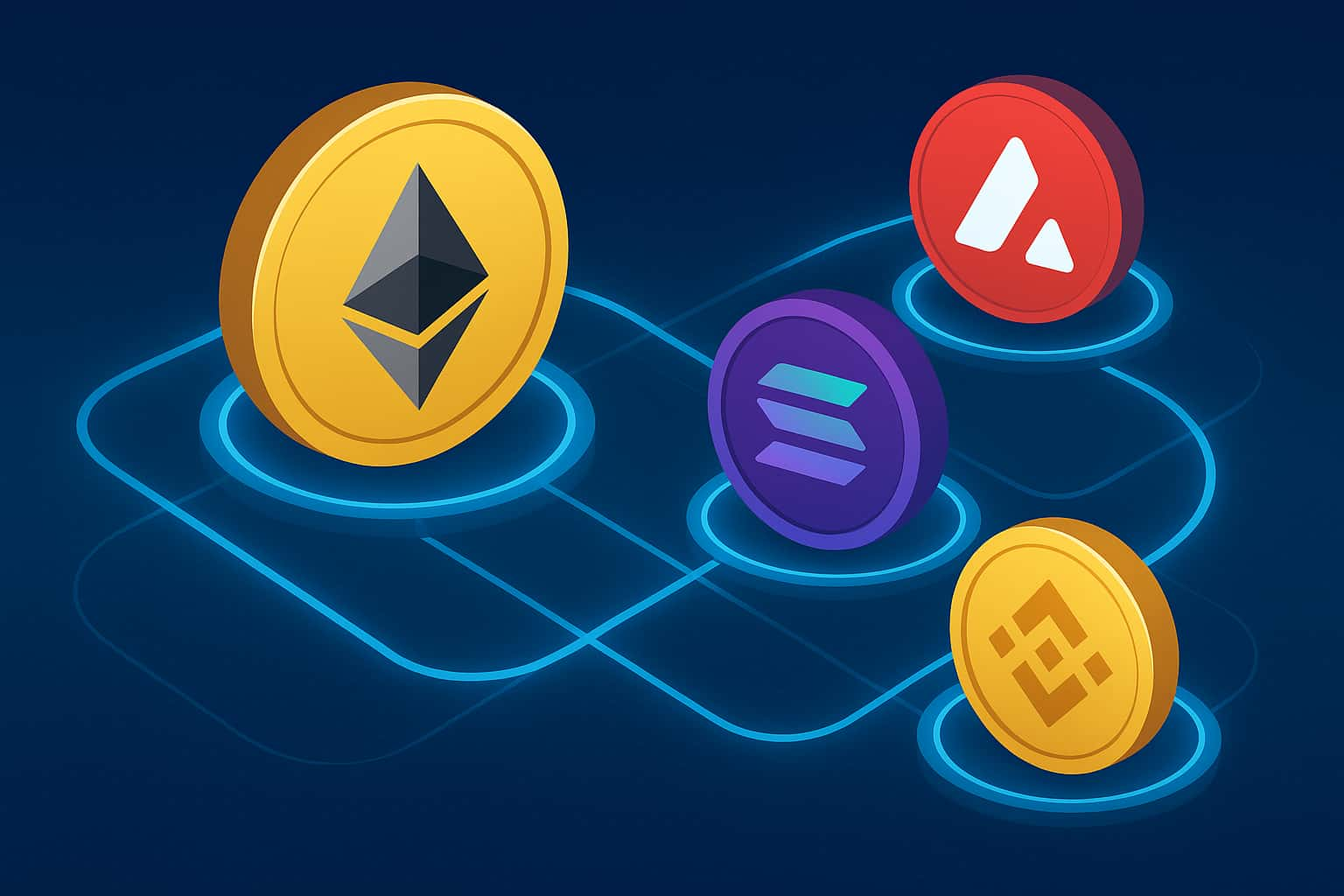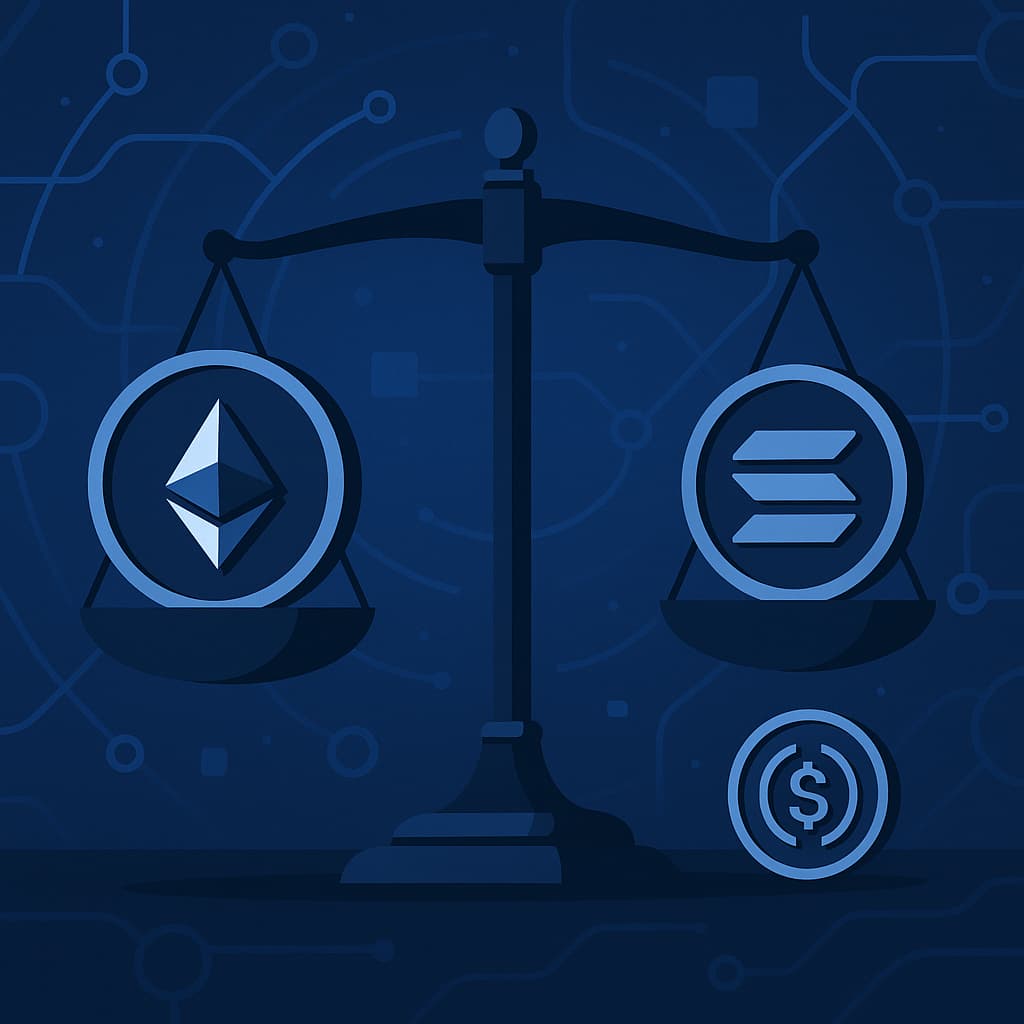-
Selecting the right blockchain consensus algorithm is a critical decision that can determine the performance, security, scalability, and overall success of your blockchain project. In this comprehensive guide, we will explore the key factors you need to consider when choosing a consensus mechanism, compare popular algorithms, and provide actionable insights to help you make an informed decision for blockchain app development.
Introduction
Blockchain technology is underpinned by consensus algorithms—protocols that enable distributed nodes to agree on the state of the blockchain without a central authority. These algorithms ensure that all transactions are validated, data remains tamper-proof, and the network operates efficiently. However, not all consensus mechanisms are created equal; each has unique characteristics that make it more or less suitable for specific applications.
When deciding on a consensus algorithm, you must evaluate your project's goals, network size, security needs, scalability requirements, and energy efficiency. This article delves into these considerations and provides a step-by-step framework to guide your decision-making process.
Understanding Consensus Algorithms
Before diving into the selection process, it's important to understand what consensus algorithms are and how they function in blockchain networks.
What Is a Consensus Algorithm?
A consensus algorithm is a set of rules that determines how transactions are verified and how nodes in a distributed network agree on the state of the ledger. In essence, these protocols ensure that all participants in the network have a consistent and up-to-date copy of the blockchain.
Key Objectives of Consensus Algorithms
- Decentralization: Ensuring that no single entity controls the network.
- Security: Protecting the network from attacks such as double-spending and Sybil attacks.
- Scalability: Allowing the network to handle an increasing number of transactions.
- Performance: Achieving fast transaction finality and low latency.
- Energy Efficiency: Minimizing the environmental impact, especially important for large networks.
Also, Read | Building a Custom Blockchain Consensus Mechanism
Popular Blockchain Consensus Algorithms
Several consensus algorithms have emerged over the years, each with its advantages and trade-offs. Below, we compare some of the most commonly used consensus mechanisms:
Proof of Work (PoW)
How It Works:
Proof of Work is the pioneering consensus mechanism used by Bitcoin. Miners compete to solve complex cryptographic puzzles, and the first to find a solution earns the right to add a new block to the blockchain. This process requires significant computational power.Pros:
- High Security: PoW has proven to be highly secure over the years.
- Decentralization: In theory, anyone with sufficient computational resources can participate.
Cons:
- Energy Consumption: PoW is notoriously energy-intensive.
- Scalability Issues: High computational requirements can lead to slower transaction speeds.
- Centralization Risks: The need for expensive hardware can lead to mining centralization.
Proof of Stake (PoS)
How It Works:
In Proof of Stake, validators are chosen to create new blocks based on the number of tokens they hold and are willing to “stake” as collateral. This method significantly reduces the need for energy-intensive computations.Pros:
- Energy Efficiency: PoS consumes far less energy compared to PoW.
- Scalability: Typically offers faster transaction processing.
- Lower Barriers to Entry: Does not require specialized hardware.
Cons:
- Wealth Concentration: Those with more tokens have a higher chance of being selected, which can lead to centralization.
- Security Concerns: Certain attack vectors, such as “nothing-at-stake,” require careful protocol design.
Delegated Proof of Stake (DPoS)
How It Works:
DPoS builds on PoS by introducing a democratic element. Token holders vote for a limited number of delegates who are responsible for validating transactions and maintaining the network. This system can achieve high throughput and low latency.Pros:
- High Performance: Capable of processing a large number of transactions per second.
- Efficient Governance: Facilitates rapid decision-making through voting.
- Energy Efficient: Retains the energy efficiency benefits of PoS.
Cons:
- Centralization Risks: The reliance on a limited number of delegates can lead to power concentration.
- Voting Complexity: Voter apathy and strategic voting can affect the network's decentralization.
Byzantine Fault Tolerance (BFT) Algorithms
How It Works:
BFT algorithms, such as Practical Byzantine Fault Tolerance (PBFT), are designed to handle malicious or faulty nodes within a network. They work by requiring a supermajority (usually around two-thirds) of nodes to agree on a transaction before it is confirmed.Pros:
- High Throughput: BFT systems often achieve high transaction speeds.
- Robust Security: Effective in environments where trust is limited.
- Low Latency: Can provide near-instant transaction finality in controlled environments.
Cons:
- Scalability: BFT algorithms are generally suitable for smaller networks due to communication overhead.
- Complexity: Implementation can be more complex compared to other consensus mechanisms.
Hybrid Consensus Mechanisms
How They Work:
Hybrid consensus mechanisms combine features of different consensus algorithms to mitigate their individual weaknesses. For example, some blockchains use a combination of PoW and PoS to leverage the security of PoW and the efficiency of PoS.Pros:
- Balanced Approach: Offers a mix of security, scalability, and efficiency.
- Customizable: Can be tailored to specific network requirements.
Cons:
- Complex Implementation: Integrating two or more consensus mechanisms can be technically challenging.
- Maintenance Challenges: Managing a hybrid system may require ongoing adjustments and update
Key Factors in Deciding a Suitable Consensus Algorithm
When choosing a consensus mechanism, you need to evaluate several key factors:
Network Security
Security is paramount in any blockchain network. Consider:
- Attack Resistance: How well does the algorithm prevent common attacks such as 51% attacks or Sybil attacks?
- Decentralization: Does the mechanism encourage wide participation, or does it favor a select few?
Scalability and Performance
Assess the expected transaction volume and network growth:
- Throughput: How many transactions per second can the algorithm handle?
- Latency: How quickly are transactions confirmed and finalized?
- Future Growth: Can the mechanism scale to accommodate an increasing number of users and transactions?
Energy Efficiency
Energy consumption has become a critical concern, particularly in light of global environmental issues:
- Resource Requirements: Evaluate the computational power and energy required.
- Sustainability: Consider the long-term environmental impact of the chosen algorithm.
Decentralization
Decentralization ensures that no single entity can control the network:
- Node Participation: How easy is it for nodes to join and participate in the network?
- Influence Distribution: Does the algorithm distribute power equitably among participants?
Economic Incentives
Economic incentives play a significant role in maintaining network security and encouraging participation:
- Staking Rewards: In PoS-based systems, consider the reward structure for validators.
- Cost of Participation: Evaluate whether the economic model favors a diverse set of participants or only those with significant resources.
Regulatory and Legal Considerations
The regulatory environment can influence the choice of consensus algorithm:
- Compliance: Some algorithms may be better suited to comply with emerging regulations.
- Jurisdictional Factors: Consider how different legal frameworks might impact the implementation and operation of the network.
Also, Discover | Cardano Ouroboros : A Tailored Approach to Proof-of-Stake
Decision-Making Framework
Here's a step-by-step framework to help you decide on a suitable blockchain consensus algorithm:
Step 1: Define Your Project Goals
- Use Case: What is the primary function of your blockchain? (e.g., payments, smart contracts, supply chain tracking)
- Target Audience: Who are your users, and what are their needs?
- Long-Term Vision: Consider how you expect the network to evolve over time.
Step 2: Assess Network Requirements
- Transaction Volume: Estimate the number of transactions per second your network will need to support.
- Node Distribution: Determine whether your network will be permissionless or permissioned, as this can influence decentralization and security needs.
- Latency Requirements: Identify acceptable levels of transaction confirmation times for your users.
Step 3: Analyze Security Needs
- Threat Modeling: Identify potential security threats and how each consensus algorithm addresses them.
- Redundancy and Fail-Safes: Ensure that the algorithm has built-in mechanisms to handle faults and malicious behavior.
Step 4: Evaluate Technical and Economic Trade-offs
- Resource Constraints: Assess available computational resources and energy budgets.
- Cost-Benefit Analysis: Compare the operational costs, such as energy consumption and hardware requirements, against the expected benefits of each algorithm.
- Incentive Structures: Ensure that the reward and penalty mechanisms align with your network's goals.
Step 5: Consider Future-Proofing and Upgradability
- Scalability Plans: Ensure that the consensus algorithm can evolve with technological advancements and network growth.
- Community and Developer Support: Look for algorithms with strong support and active development communities, which can provide ongoing improvements and security updates.
Step 6: Conduct Pilot Testing and Simulations
- Prototype Development: Build a prototype using the shortlisted consensus mechanisms to evaluate performance under real-world conditions.
- Stress Testing: Simulate high transaction volumes and attack scenarios to assess resilience.
- User Feedback: Engage with potential users to gather feedback on performance and usability.
Also, Explore | Understanding Blockchain Proof of Concept Development
Real-World Case Studies
Examining real-world examples can provide valuable insights into how different consensus algorithms perform under various conditions.
Bitcoin and Proof of Work
Bitcoin's success is largely attributed to its robust PoW mechanism, which has proven resilient against attacks over more than a decade. However, the high energy consumption and slower transaction times illustrate PoW's limitations, particularly for applications requiring rapid, high-volume transactions.
Ethereum's Transition to Proof of Stake
Ethereum's planned transition from PoW to PoS—commonly known as Ethereum 2.0—highlights the industry's push toward more energy-efficient and scalable consensus mechanisms. By incentivizing validators through staking rather than mining, Ethereum aims to reduce energy consumption while increasing transaction throughput.
Delegated Proof of Stake in EOS
EOS utilizes a DPoS system to achieve high transaction speeds and low latency. While this model offers excellent performance, it also raises concerns regarding centralization, as a small number of block producers control the network.
You may also like | Blockchain MVP (Minimum Viable Product) Development Guide
Comparative Analysis of Consensus Algorithms
To summarize the key differences, consider the following comparison:
Consensus Algorithm Security Scalability Energy Efficiency Decentralization Use Cases Proof of Work High Moderate Low Moderate Digital gold, high-value transfers Proof of Stake Moderate High High Moderate Smart contracts, DeFi applications DPoS Moderate Very High High Low to Moderate High-throughput apps, gaming platforms BFT Variants High Low High High Enterprise solutions, permissioned networks Hybrid Models Variable Variable Variable Variable Custom applications needing balance Future Trends and Emerging Technologies
The landscape of blockchain consensus algorithms is rapidly evolving. Here are some emerging trends and technologies that could influence future decisions:
Hybrid and Modular Consensus
Hybrid consensus mechanisms that combine elements of PoW, PoS, and BFT are gaining traction. These models aim to leverage the strengths of each algorithm while mitigating their weaknesses. Future blockchains may offer modular consensus frameworks, allowing networks to swap out components as needs evolve.
Advances in Zero-Knowledge Proofs
Zero-knowledge proofs (ZKPs) are becoming increasingly relevant, particularly for enhancing privacy and scalability. Integrating ZKP-based consensus protocols could provide strong security guarantees while preserving user anonymity.
Quantum-Resistant Algorithms
As quantum computing advances, traditional cryptographic methods may become vulnerable. Researchers are actively developing quantum-resistant consensus algorithms to future-proof blockchain networks against potential quantum attacks.
Increased Regulatory Scrutiny
As governments and regulatory bodies begin to scrutinize blockchain technology more closely, consensus algorithms that facilitate transparency and compliance may become preferable for enterprise and institutional applications.
You might also be interested in | Optimism Platform: Developing and Implementing Layer 2 Smart Contracts
Conclusion
Deciding on a suitable blockchain consensus algorithm is a multifaceted decision that requires balancing security, scalability, decentralization, energy efficiency, and regulatory considerations. There is no one-size-fits-all solution; the optimal choice depends on your specific project goals and the environment in which your blockchain will operate.
By defining your project's objectives, assessing network requirements, analyzing technical and economic trade-offs, and conducting rigorous testing, you can identify a consensus mechanism that aligns with your long-term vision. Whether you opt for the robust security of Proof of Work, the energy efficiency of Proof of Stake, or a hybrid approach that combines multiple paradigms, understanding these core factors will guide you in making an informed decision.
The blockchain ecosystem continues to evolve rapidly, and staying abreast of emerging trends and technologies is essential for maintaining a competitive edge. As consensus algorithms mature and adapt to new challenges, they will undoubtedly play a crucial role in shaping the future of decentralized networks.
Frequently Asked Questions (FAQ)
Q1: What is the primary role of a blockchain consensus algorithm?
A1: The consensus algorithm ensures that all nodes in a distributed network agree on the state of the blockchain, thereby validating transactions and maintaining the integrity and security of the ledger.Q2: Why is energy efficiency important when choosing a consensus mechanism?
A2: Energy efficiency is crucial not only for reducing operational costs but also for minimizing environmental impact. Algorithms like Proof of Stake are preferred in scenarios where energy conservation is a priority.Q3: How does decentralization affect the choice of consensus algorithm?
A3: Decentralization ensures that no single entity controls the network. Some algorithms, like DPoS, may achieve high performance but could lead to centralization if a small group of delegates control the validation process. Therefore, the degree of decentralization must be balanced with performance needs.Q4: Can a blockchain network switch consensus algorithms after deployment?
A4: While it is technically possible to upgrade or switch consensus algorithms, doing so is complex and may require a hard fork or other significant network changes. Such transitions demand careful planning, community consensus, and robust testing.Q5: What role do economic incentives play in consensus algorithms?
A5: Economic incentives—such as mining rewards, staking returns, or transaction fees—encourage participation and secure the network by aligning the interests of validators with the network's overall health. The design of these incentives is a critical factor in choosing a suitable algorithm.Q6: How do regulatory considerations influence the choice of a consensus algorithm?
A6: Regulatory requirements may favor consensus mechanisms that offer transparency and compliance capabilities. For instance, networks that can easily adapt to anti-money laundering (AML) and know-your-customer (KYC) protocols might be more appealing to institutional users.By understanding the key criteria and trade-offs associated with different consensus algorithms, you can make an informed decision that best suits your blockchain project's unique requirements. This detailed analysis serves as a roadmap for navigating the complex landscape of blockchain consensus, ensuring that your network is secure, scalable, and aligned with your long-term strategic objectives.
Note: This article synthesizes current best practices and emerging trends in blockchain consensus technology. For further guidance tailored to your specific project, consider consulting with blockchain experts and legal advisors.

Our Offices
INDIA
Emaar Digital Greens, Sector 61,
Gurugram, Haryana
122011.
Welldone Tech Park,
Sector 48, Sohna road,
Gurugram, Haryana
122018.















